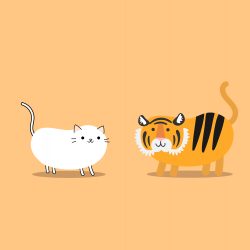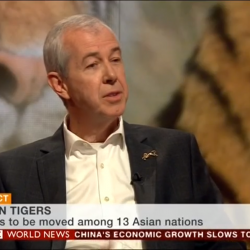In celebration of World Tiger Day, Friday 29 July 2016, we are THRILLED to announce the launch of our new online initiative – "THE KITTY" – a YouTube channel dedicated to cat videos.
It’s never been easier to help raise funds for Tigers – Every time you watch a cat video via "The Kitty", a little bit of money goes towards tiger conservation. (You know you were going to watch them anyway)
Just follow 3 simple steps:
1. WATCH CAT VIDEOS - hundreds of clips are already available on The Kitty YouTube Channel
2. UPLOAD CAT VIDEOS - Got some funny/cute/crazy videos of your feline friends? Upload them to http://kitty.savewildtigers.org today so they can start earning money for wild tigers.
3. SHARE CAT VIDEOS - Share any video from The Kitty YouTube Channel via your social networks – the more views they get, the more money we raise!
Collectively, the world watches cat videos hundreds of millions of times each month on YouTube. Save Wild Tigers is harnessing the internet's obsession with cats, leveraging the platform provided by YouTube to raise money for tiger conservation through ad views.
"Cat videos are the online phenomenon of our time, with over 35 billion views to date and counting," says Simon Clinton, founder of Save Wild Tigers. "We’re obsessed with them. When you put this number beside the number of tigers left in the wild, a mere 3,200, we thought it was an alarming reflection on where our priorities lie."
Enlisting pet cats to help big cats is also a way to involve a younger generation that tends to donate less to charity in traditional ways. "Today, [people] would rather support brands that do good rather than donate their hard-earned dollars toward a cause," says Clinton. "Small change donations have become near obsolete, so charities need to adapt."
"We’re giving content makers—which is pretty much everyone with a smartphone—their own platform to collectively do something that will benefit the planet," Clinton says. "If we can harness or own the long tail of cat videos on YouTube, we can generate significant and ongoing funds for wild tiger preservation."
If all of the cat video views on YouTube so far had raised money for conservation, we could have raised more than £265 million!
That's enough money, in theory, to save tigers from extinction in the wild!
The funds raised by ad views will support SWT campaigns that help reduce demand for tiger products in countries such as China and Vietnam, undercover investigations into the wildlife trade, and lobbying for better regulations.










